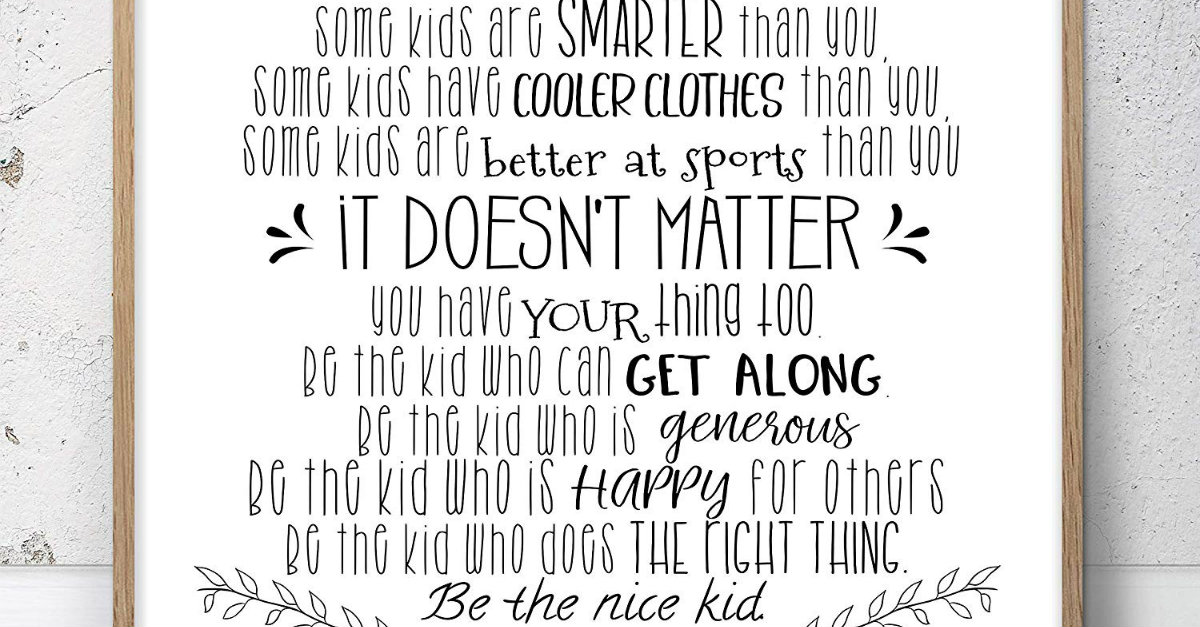There’s a cheerful message that’s being passed around on social media. It’s appeared on school banners and classroom doors and at least one hallway mural. Maybe you’ve seen it? It goes something like this;
Some kids are smarter than you,
Some kids have cooler clothes than you,
Some kids are better at sports than you,
It doesn’t matter
You have your thing too.
Be the kid who can get along,
Be the kid who is generous,
Be the kid who is happy for others,
Be the kid who does the right thing.
Be the nice kid.
To most readers, this will seem like just another positive affirmation. An ideal for students to reach for as they make their way through the school year. Yet, among our teacher friends, this well-intended message has sparked some heated debates over classroom culture and social-emotional learning.
Encouragement vs. Elitism
For better or worse, school is a place where students get labeled. Cliques are as common as backpacks, and everyone is searching for a place to belong. You have your jocks, your theater geeks, your overachievers, and then you have students who aren’t so much labeled as branded. They get defined by their old clothes, bad grades, or awkward mannerisms. As teachers, it’s our responsibility to help students recognize their full potential and never allow them to embrace an identity of failure.
But why should only they be the nice ones? Some educators are concerned this cheerful message is conveying the wrong lesson. The implication is that if you’re the smartest, or the best at sports, or wear the coolest clothes, you don’t need to be nice. Leave that for the kids beneath you. Alternatively, if you aren’t gifted in those specific areas, the sign tells you your only option is to be the nice one. Not exactly the uplifting proverb students are looking for
Naturally, advocates of the message don’t see it that way. They argue the core lesson is to be the better person. To do the right thing. Be empathetic and kind, and true to yourself. Do your best, live by your values, and don’t compare yourself to other people. It’s a reminder that only you can determine your identity, so if you must be something, be kind.
Be a Teacher
So, if you fall on the “elitism” side of the spectrum, I salute your ability to read closely and think critically. Share these skills with your students and see if they have the same issue with the saying. Or, if you fall on the “encouragement” side of the debate, I salute your ability to embrace positivity and appreciate an author’s intent. Post the saying proudly and develop your students’ kindness, empathy, and compassion. After all, it’s only a mural. How we treat students in the classroom will have a far more profound effect on their lives than some inspirational quote hanging on a door. We’re the ones who need to show them how to be nice, how to recognize their own talents, and how to overcome self-doubt. In short, we need to be teachers!
So don’t worry too much over some happy quote on social media. Instead, think about your students, and help them discover the best person they could hope to be.


